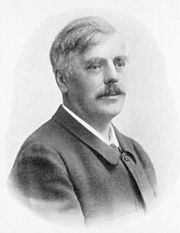Édouard Brissaud's Human Design Chart
6/2 Sacral GeneratorFrench physician, neurologist, anatomist, pathologist and historian of medicine.
Brissaud studied under Charcot at the famous at Salpêtrière Hospital. When Charcot died in 1893, Brissaud was one of the main candidates to follow him up. He was Charcot’s favorite pupil. But in the secret election that followed Charcot’s unexpected death, the provincial but modest academic Raymond won.
Personality
Brissaud was an extremely talented man with very broad interests. From literature, drama, music to the many the fields of medicine in which he excelled : from medical history, physiology, motion disturbances, anatomy, neurology to psychiatry. Many syndromes got his name (eponym). If he had not become a physician, he would have been an artist. Actually he was both an scientist and an artist, as he illustrated his many medical papers. With so many talents displayed he could be called a true “uomo universalis” or polymath.
His biographer J. Poirier called him “a neglected neurologist and an artist at heart”. He was a distinguished neurologist. He founded the journal Revue Neurologique, and authored a monumental atlas of the human brain and a talented history of popular medical expressions. He was surrounded by a family of artists, musicians and, above all, actors and singers. The best-known were his great-grandfather Jacques-Marie Boutet de Monvel, nicknamed “The Great Monvel “, his great aunt Mademoiselle Mars, and his cousin Marie Dorval–monstres sacrés of the first half of the XIXth century–as well as the Anselme-Baptiste family and the three Nourrit tenors. As a child, Edouard Brissaud frequently took part in family plays. He was spontaneous, facetious, a practical joker and something of a show-off. He wrote a comedy play entitled “Le chèque”, in which a medical professor and his student discuss the temporary direction Chair of Nervous System Diseases that Brissaud briefly held between 1893 and 1894, after the death of his mentor Charcot.”
Maybe Brissauds greatest contribution to medicine was his description of “la sinistrose” (malingering) in 1908. Like Charcot’s and much of his pupils work, Brissaud tried to distinguish the visible epiphenomena of structural (neurological/anatomic) brain disorder from functional (psychiatric) brain disorder. F.i: If you always display the unconscious Babinski foot sole reflex a structural (hardware) pyramidal tract is likely, otherwise your failure to walk might be caused by another disease.
One can compare this thinking in levels of (dis)functioning to the vision of “the father of modern pathology” and environmentalist Rudolf Virchow (13 October 1821 – 5 September 1902), who distinguished many levels of dysfunction (cell, organ, organism, state) in his concept of the “Zell Staat”. Now we could add the sub-microscopic biochemical Enzyme levels of functioning and their genetics to it, but the regulators of them still remain mysterious. And distinguishing the major source level of (mal)functioning still remains a great art.
Maybe for this awareness of human complexity Brissaud was portrayed as “Docteur du Boulbon” in the famous novel “Dans La Recherche du temps perdu” of Marcel Proust who quoted him with this thought about the limits of human knowledge: “For each illness that doctors cure with medicine, they provoke ten in healthy people by inoculating them with the virus that is a thousand times more powerful than any microbe: the idea that one is ill.”
Brissaud became a Chevalier de la Légion d’honneur (31 December 1895).
Brissaud died 20 December 1909 of a brain tumour, aged 57 in Paris.
Link to Wikipedia
Discover More Famous People
Browse and analyze over 55,000 public figures and celebrities.
Ra Uru Hu
5/1 Manifestor
Martha Stewart
4/6 Manifestor
David Lynch
4/6 Generator
Barack Obama
6/2 Projector
Steve Jobs
6/3 Generator
Vladimir Putin
5/1 Manifestor
Kim Kardashian
3/5 Generator
Michael Jackson
1/3 Projector
Marilyn Monroe
6/2 Projector
Ariana Grande
2/4 Projector
Oprah Winfrey
2/4 Generator
Johnny Depp
2/4 ManifestorWhat is HumanDesign.ai and how does it work?
Curious what makes Édouard Brissaud tick? HumanDesign.ai instantly maps their exact birth data into a fully interactive clickable bodygraph chart, letting you hover or tap every center, channel, and gate for plain-language explanations. Bella, the platform’s built-in AI guide, adds context in real time, translating complex mechanics into everyday insights so you can see how Édouard Brissaud’s strengths, challenges, and life themes play out on-screen.
The same tools are waiting for you. Generate your own Human Design Chart in seconds, open a library of 2000+ suggested questions, and chat with Bella as often as you like to decode your design, daily transits, and even relationship dynamics.
Want to compare energies? Save unlimited charts for friends, family, or clients, then ask Bella to reveal compatibilities, composite patterns, or coaching tips, all in one conversation thread.
Start free with core features, or unlock our Personal and Pro plans for deeper dives: unlimited Q&A, celebrity chart search spanning 55,000+ public figures, white-label PDF reports, branded content generation, and a professional profile with built-in booking for practitioners. Whether you’re exploring your own potential or guiding others, HumanDesign.ai delivers an ever-expanding toolbox of AI-powered insights—no spreadsheets, no jargon, just clarity at your fingertips.
Ready to see yours? Signup for FREE today!

